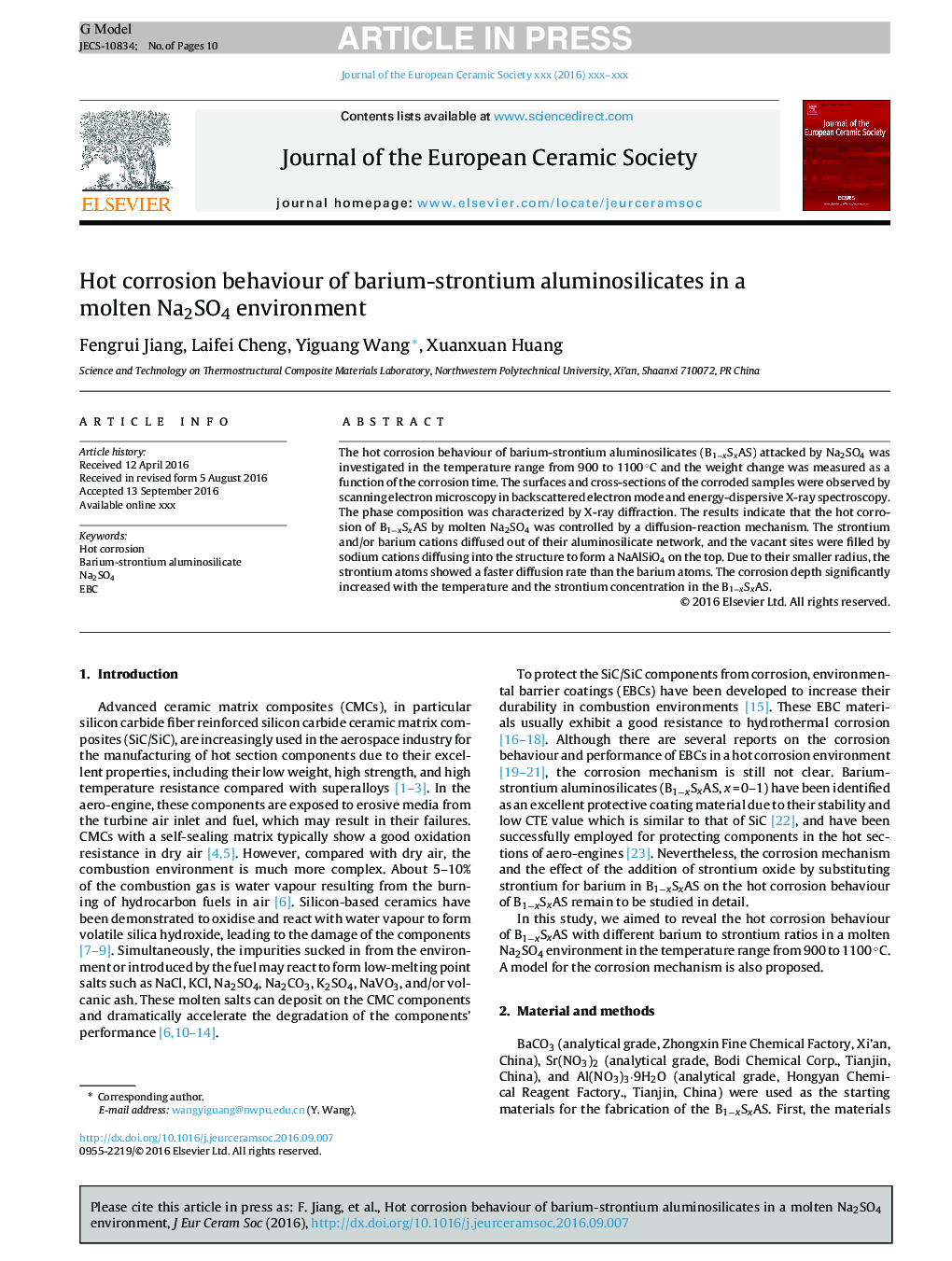| Article ID | Journal | Published Year | Pages | File Type |
|---|---|---|---|---|
| 5440970 | Journal of the European Ceramic Society | 2017 | 10 Pages |
Abstract
The hot corrosion behaviour of barium-strontium aluminosilicates (B1âxSxAS) attacked by Na2SO4 was investigated in the temperature range from 900 to 1100 °C and the weight change was measured as a function of the corrosion time. The surfaces and cross-sections of the corroded samples were observed by scanning electron microscopy in backscattered electron mode and energy-dispersive X-ray spectroscopy. The phase composition was characterized by X-ray diffraction. The results indicate that the hot corrosion of B1âxSxAS by molten Na2SO4 was controlled by a diffusion-reaction mechanism. The strontium and/or barium cations diffused out of their aluminosilicate network, and the vacant sites were filled by sodium cations diffusing into the structure to form a NaAlSiO4 on the top. Due to their smaller radius, the strontium atoms showed a faster diffusion rate than the barium atoms. The corrosion depth significantly increased with the temperature and the strontium concentration in the B1âxSxAS.
Keywords
Related Topics
Physical Sciences and Engineering
Materials Science
Ceramics and Composites
Authors
Fengrui Jiang, Laifei Cheng, Yiguang Wang, Xuanxuan Huang,
